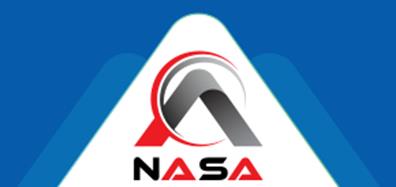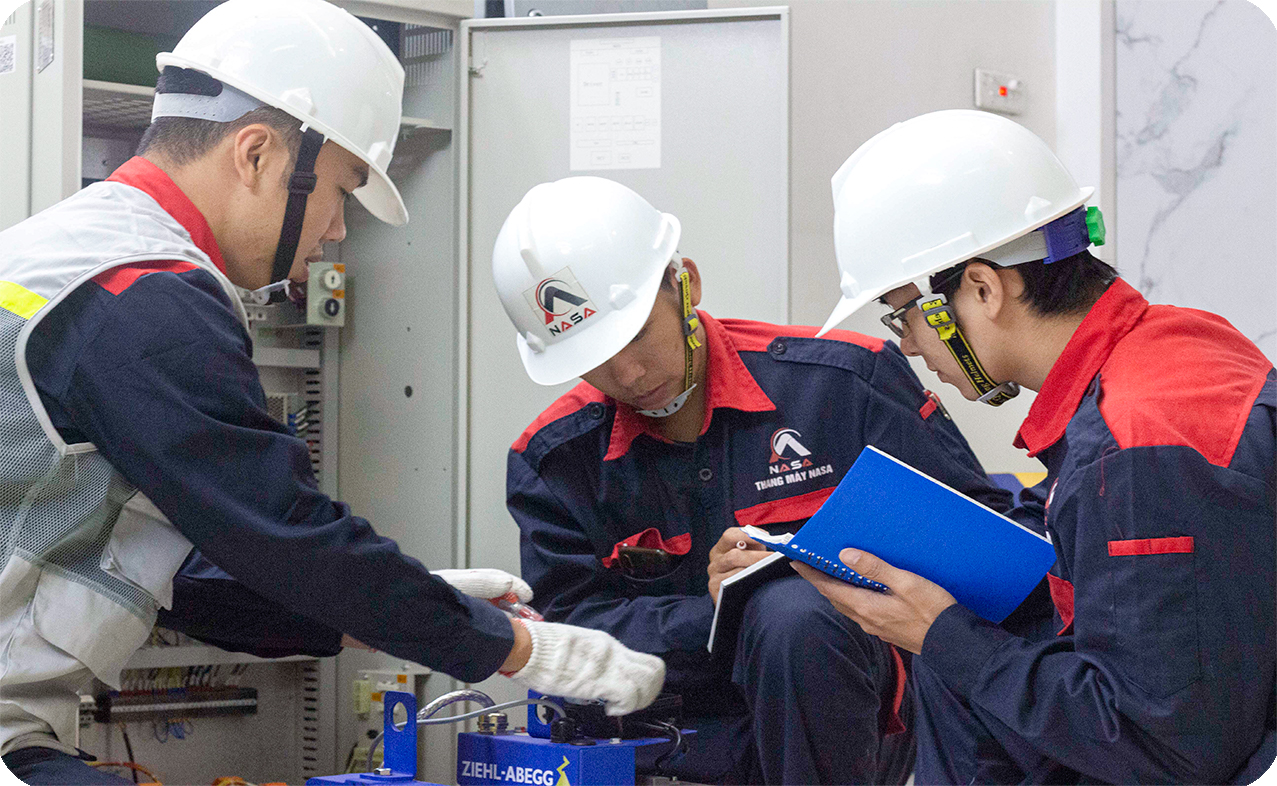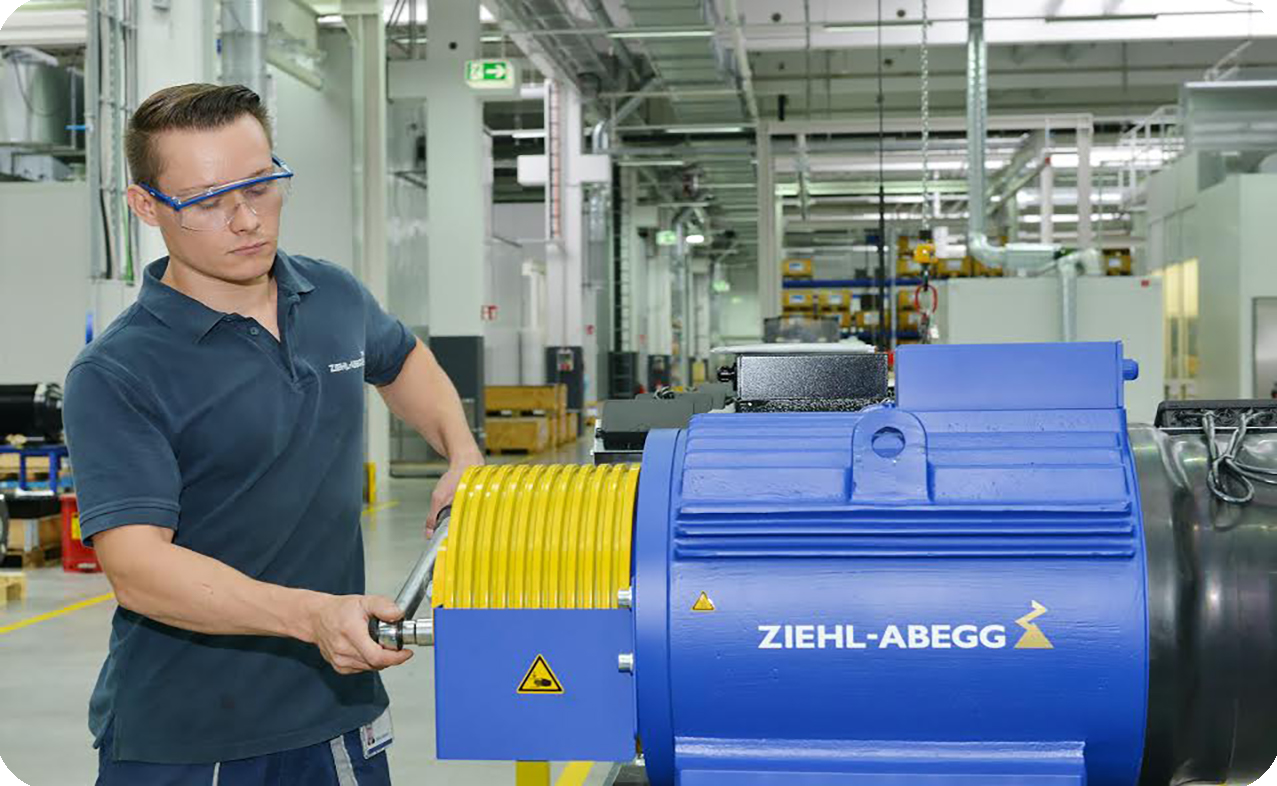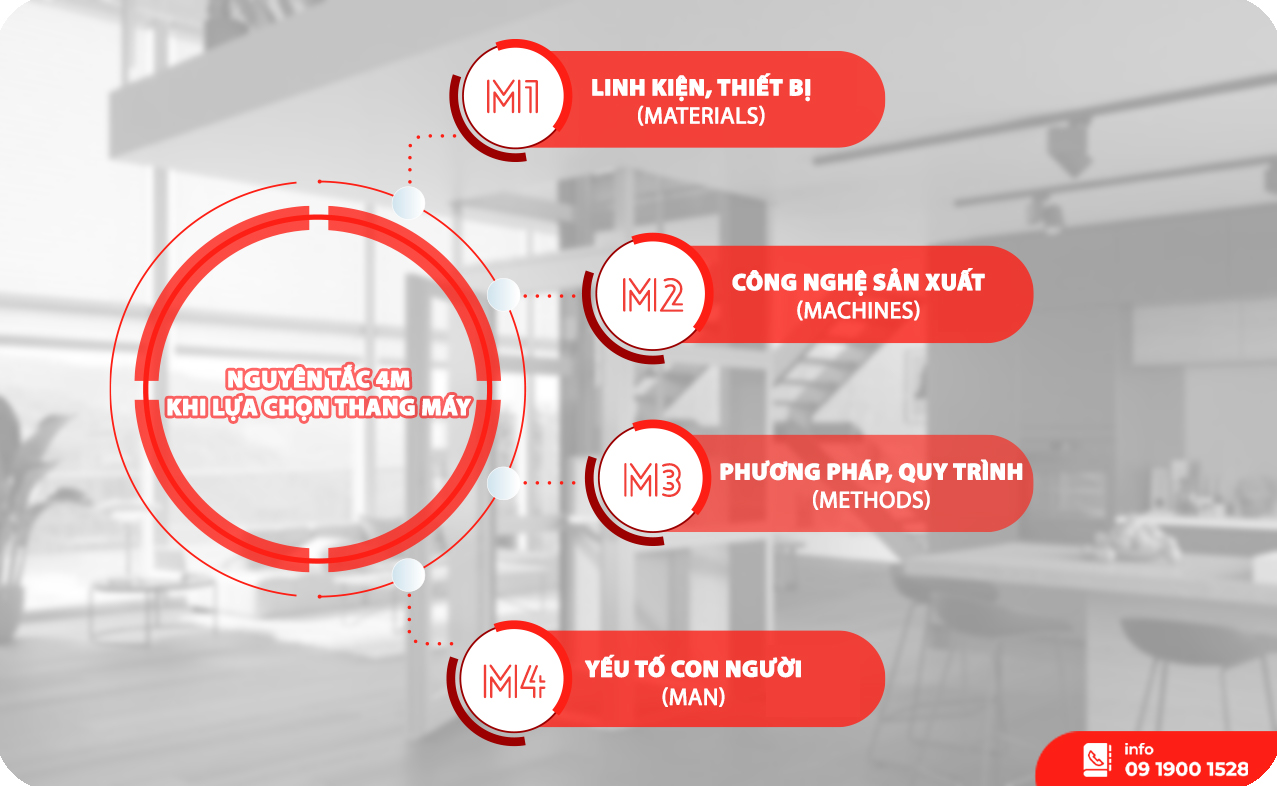Looking for:
Reaktor 6 update free.Reason Studios

ITER initially the International Thermonuclear Experimental Reactor , iter meaning “the way” or “the path” in Latin [1] [2] [3] is an international nuclear fusion research and engineering megaproject aimed at creating energy by replicating, on Earth, the fusion processes of the Sun. Upon completion of construction of the main reactor and first plasma, planned for late , [4] it will be the world’s largest magnetic confinement plasma physics experiment and the largest experimental tokamak nuclear fusion reactor.
It is being built next to the Cadarache facility in southern France. The long-term goal of fusion research is to generate electricity.
ITER’s stated purpose is scientific research, and technological demonstration of a large fusion reactor, without electricity generation.
ITER’s thermonuclear fusion reactor will use over MW of electrical power to cause the plasma to absorb 50 MW of thermal power, creating MW of heat from fusion for periods of to seconds. Construction of the ITER complex in France started in , [17] and assembly of the tokamak began in Fusion aims to replicate the process that takes place in stars where the intense heat at the core fuses together nuclei and produces massive amounts of energy in the form of heat and light.
Harnessing fusion power in terrestrial conditions would provide sufficient energy to satisfy mounting demand, and to do so in a sustainable manner that has a relatively small impact on the environment. One gram of deuterium-tritium fuel mixture in the process of nuclear fusion produces 90,kilowatt hours of energy, or the equivalent of 11 tonnes of coal. Nuclear fusion uses a different approach to traditional nuclear energy.
Current nuclear power stations rely on nuclear fission with the nucleus of an atom being split to release energy. Nuclear fusion takes multiple nuclei and uses intense heat to fuse them together, a process that also releases energy. Nuclear fusion has many potential attractions. The fuel is relatively abundant or can be produced in a fusion reactor.
After preliminary tests with deuterium, ITER will use a mix of deuterium-tritium for its fusion because of the combination’s high energy potential. The first isotope, deuterium , can be extracted from seawater , which means it is a nearly inexhaustible resource. On 21 November , the seven project partners formally agreed to fund the creation of a nuclear fusion reactor. The reactor was expected to take 10 years to build and ITER had planned to test its first plasma in and achieve full fusion by , however the schedule is now to test first plasma in and full fusion in The best result achieved in a tokamak is 0.
For commercial fusion power stations, engineering gain factor is important. Engineering gain factor is defined as the ratio of a plant electrical power output to electrical power input of all plant’s internal systems tokamak external heating systems, electromagnets, cryogenics plant, diagnostics and control systems, etc.
Some nuclear engineers consider a Q of is required for commercial fusion power stations to be viable. ITER will not produce electricity. Producing electricity from thermal sources is a well known process used in many power stations and ITER will not run with significant fusion power output continuously.
Adding electricity production to ITER would raise the cost of the project and bring no value for experiments on the tokamak. One of the primary ITER objectives is to achieve a state of ” burning plasma “. No fusion reactors had created a burning plasma until the competing NIF fusion project reached the milestone on 8 August The bigger a tokamak is, the more fusion reaction-produced energy is preserved for internal plasma heating and the less external heating is required , which also improves its Q-value.
This is how ITER plans for its tokamak reactor to scale. Preparations for the Gorbachev-Reagan summit showed that there were no tangible agreements in the works for the summit. However, the ITER project was gaining momentum in political circles due to the quiet work being done by two physicists, the American scientist Alvin Trivelpiece who served as Director of the Office of Energy Research in the s and the Russian scientist Evgeny Velikhov who would become head of the Kurchatov Institute for nuclear research.
The two scientists both supported a project to construct a demonstration fusion reactor. At the time, magnetic fusion research was ongoing in Japan, Europe, the Soviet Union and the US, but Trivelpiece and Velikhov believed that taking the next step in fusion research would be beyond the budget of any of the key nations and that collaboration would be useful internationally.
My response was ‘great idea’, but from my position, I have no capability of pushing that idea upward to the President. This push for cooperation on nuclear fusion is cited as a key moment of science diplomacy , but nonetheless a major bureaucratic fight erupted in the US government over the project.
One argument against collaboration was that the Soviets would use it to steal US technology and expertise. A second was symbolic and involved American criticism of how the Soviet physicist Andrei Sakharov was being treated. Sakharov was an early proponent of the peaceful use of nuclear technology and along with Igor Tamm he developed the idea for the tokamak that is at the heart of nuclear fusion research.
This led to nuclear fusion cooperation being discussed at the Geneva summit and release of a historic joint statement from Reagan and Gorbachev that emphasized, “the potential importance of the work aimed at utilizing controlled thermonuclear fusion for peaceful purposes and, in this connection, advocated the widest practicable development of international cooperation in obtaining this source of energy, which is essentially inexhaustible, for the benefit of all mankind. As a result, collaboration on an international fusion experiment began to move forward.
This meeting marked the launch of the conceptual design studies for the experimental reactors as well as the start of negotiations for operational issues such as the legal foundations for the peaceful use of fusion technology, the organizational structure and staffing, and the eventual location for the project. This meeting in Vienna was also where the project was baptized the International Thermonuclear Experimental Reactor, although it was quickly referred to by its abbreviation alone and its Latin meaning of ‘the way’.
Conceptual and engineering design phases were carried out under the auspices of the IAEA. These issues were partly responsible for the United States temporarily exiting the project in before rejoining in There was a heated competition to host the ITER project with the candidates narrowed down to two possible sites: France and Japan. In , Australia became the first non-member partner of the project. The ITER Council is responsible for the overall direction of the organization and decides such issues as the budget.
There have been three directors-general so far: [77]. ITER’s stated mission is to demonstrate the feasibility of fusion power as a large-scale, carbon-free source of energy.
The objectives of the ITER project are not limited to creating the nuclear fusion device but are much broader, including building necessary technical, organizational, and logistical capabilities, skills, tools, supply chains, and culture enabling management of such megaprojects among participating countries, bootstrapping their local nuclear fusion industries. From to the middle of the s, hundreds of fusion scientists and engineers in each participating country took part in a detailed assessment of the tokamak confinement system and the design possibilities for harnessing nuclear fusion energy.
The ITER project was initiated in Ground was broken in [88] and construction of the ITER tokamak complex started in Machine assembly was launched on 28 July When deuterium and tritium fuse, two nuclei come together to form a helium nucleus an alpha particle , and a high-energy neutron. While nearly all stable isotopes lighter on the periodic table than iron and nickel , which have the highest binding energy per nucleon , will fuse with some other isotope and release energy, deuterium and tritium are by far the most attractive for energy generation as they require the lowest activation energy thus lowest temperature to do so, while producing among the most energy per unit weight.
All proto- and mid-life stars radiate enormous amounts of energy generated by fusion processes. Activation energies in most fusion systems this is the temperature required to initiate the reaction for fusion reactions are generally high because the protons in each nucleus will tend to strongly repel one another, as they each have the same positive charge.
In ITER, this distance of approach is made possible by high temperatures and magnetic confinement. ITER uses cooling equipment like a cryopump to cool the magnets to close to absolute zero. Additional heating is applied using neutral beam injection which cross magnetic field lines without a net deflection and will not cause a large electromagnetic disruption and radio frequency RF or microwave heating.
At such high temperatures, particles have a large kinetic energy , and hence velocity. If unconfined, the particles will rapidly escape, taking the energy with them, cooling the plasma to the point where net energy is no longer produced.
A successful reactor would need to contain the particles in a small enough volume for a long enough time for much of the plasma to fuse. A charged particle moving through a magnetic field experiences a force perpendicular to the direction of travel, resulting in centripetal acceleration , thereby confining it to move in a circle or helix around the lines of magnetic flux.
A solid confinement vessel is also needed, both to shield the magnets and other equipment from high temperatures and energetic photons and particles, and to maintain a near-vacuum for the plasma to populate. The material must be designed to endure this environment so that a power station would be economical.
Once fusion has begun, high-energy neutrons will radiate from the reactive regions of the plasma, crossing magnetic field lines easily due to charge neutrality see neutron flux.
Since it is the neutrons that receive the majority of the energy, they will be ITER’s primary source of energy output. The inner wall of the containment vessel will have blanket modules that are designed to slow and absorb neutrons in a reliable and efficient manner and therefore protect the steel structure and the superconducting toroidal field magnets. Energy absorbed from the fast neutrons is extracted and passed into the primary coolant.
This heat energy would then be used to power an electricity-generating turbine in a real power station; in ITER this electricity generating system is not of scientific interest, so instead the heat will be extracted and disposed of. The vacuum vessel is the central part of the ITER machine: a double-walled steel container in which the plasma is contained by means of magnetic fields. The ITER vacuum vessel will be twice as large and 16 times as heavy as any previously manufactured fusion vessel: each of the nine torus -shaped sectors will weigh approximately tons for a total weight of tons.
When all the shielding and port structures are included, this adds up to a total of 5, tonnes. Its external diameter will measure Once assembled, the whole structure will be The primary function of the vacuum vessel is to provide a hermetically sealed plasma container. Its main components are the main vessel, the port structures and the supporting system. The main vessel is a double-walled structure with poloidal and toroidal stiffening ribs between millimetre-thick 2.
These ribs also form the flow passages for the cooling water. The space between the double walls will be filled with shield structures made of stainless steel. The inner surfaces of the vessel will act as the interface with breeder modules containing the breeder blanket component. These modules will provide shielding from the high-energy neutrons produced by the fusion reactions and some will also be used for tritium breeding concepts.
The vacuum vessel has a total of 44 openings that are known as ports — 18 upper, 17 equatorial, and 9 lower ports — that will be used for remote handling operations, diagnostic systems, neutral beam injections and vacuum pumping. Remote handling is made necessary by the radioactive interior of the reactor following a shutdown, which is caused by neutron bombardment during operation.
Vacuum pumping will be done before the start of fusion reactions to create the necessary low density environment, which is about one million times lower than the density of air. ITER will use a deuterium-tritium fuel, and while deuterium is abundant in nature, tritium is much rarer because it is a hydrogen isotope with a half-life of just This component, located adjacent to the vacuum vessel, serves to produce tritium through reaction with neutrons from the plasma.
There are several reactions that produce tritium within the blanket. ITER is based on magnetic confinement fusion that uses magnetic fields to contain the fusion fuel in plasma form. The magnet system used in the ITER tokamak will be the largest superconducting magnet system ever built. The 18 toroidal field coils will also use niobium-tin.
They are the most powerful superconductive magnets ever designed with a nominal peak field strength of There will be three types of external heating in ITER: []. The ITER cryostat is a large 3,tonne stainless steel structure surrounding the vacuum vessel and the superconducting magnets, with the purpose of providing a super-cool vacuum environment. The divertor is a device within the tokamak that allows for removal of waste and impurities from the plasma while the reactor is operating.
At ITER, the divertor will extract heat and ash that are created by the fusion process, while also protecting the surrounding walls and reducing plasma contamination.
Reaktor 6 update free
Native Instruments Reaktor 6 V Crack Free Download r2r Latest Version for Windows. It is full offline installer standalone setup of Native Instruments Reaktor 6 V Crack mac for 32/ REAKTOR is here: Better Blocks, refined UX, smarter workflow. The latest version of REAKTOR delivers a large-scale update to the Blocks framework. Apr 12, · Native Instruments Reaktor is available now as a free update for existing R6 users. Blocks Base is available for free in the Komplete Start bundle (free) and Blocks Prime is available as a free add-on for R6 users. Full details will come on Monday on the official NI website. More information here: Native Instruments Plugin News. MEGA-BASS From Icebreaker Audio, this ensemble is donationware. Built for live performance, with built-in integration with the Novation Launchpad. Available for download here, you can check out the videos and sound sample for more information. There are other free and paid Reaktor ensembles available on the site as well.
Reaktor 6 update free.Breeder reactor
Reaktor is a graphical modular software music studio developed by Native Instruments NI. It allows musicians and sound specialists to design and build their own instruments, samplerseffects and sound design tools.
It is supplied with many ready-to-use instruments and effects, reaktor 6 update free emulations of classic synthesizers to futuristic sound design tools. In addition, more than free instruments can be downloaded from the growing User Library.
All of Reaktor’s instruments can be freely examined, customized or taken apart; Reaktor is a tool that effectively encourages reverse engineering. The free, limited version called Reaktor Player is software that allows musicians to play NI-released Reaktor instruments, but not edit or reverse-engineer them. InNative Instruments released Generator version 0. ByNative Instruments redesigned the program to include new hierarchy, and integrated third-party drivers for use with any standard Windows sound card.
ByReaktor 2. Integrated real-time display of filters and envelopes and granular synthesis are among most notable features. With version 3. Reaktor 6 update free expansion of synthesis and sampling modules, reaktor 6 update free of new control-based modules XY control and data management event tables greatly expands the abilities of the program. Нажмите чтобы увидеть больше earliest version to really resemble the modern incarnation of the software is version 3.
Reaktor 3. Reaktor 4 was a major enhancement in terms of stability, instrument library, GUI, and VSTi ease-of-use in external sequencers. It shipped almost six months behind schedule. Zavalishin ceased the development of his software, [4] yet integrated a deeper DSP-level operation within Reaktor, known as Reaktor Core Technology. Core Technology initially confused a lot of instrument designers because of its complexity, but is now steadily making its way into new instruments and ensembles.
Reaktor 5. Also a number of bug fixes were implemented. The release of Reaktor 5. It features a revised interface as well as other changes. Reaktor 6. It features many new improvements for advanced programmers. A new “Blocks” feature allowed for the development of rackmount style modular “patches” for creating synthesizers and effects. The building blocks used give Reaktor users freedom of choice to help shape their sound design. The modules are categorized into particular hierarchy to aid clarity in patching.
The patcher window allows one to navigate the inner structure of user’s models. Many factory-shipped objects within Reaktor can be reaktor 6 update free and edited, and new objects can be generated on the fly. Each of the Reaktor modules is defined by its inner workings, and expansion thereof to the users’ specification comes with relative ease.
The objects that are available within Reaktor range from simple math operators to large sound modules. Implementation of Core Technology with version 5 reaktor 6 update free user to view and edit the structure of any “Core Module” building block.
Although such editing can reaktor 6 update free an exceptionally powerful tool, [9] successful manipulation of Core Cells with predictable results requires in-depth knowledge of algorithmic implementation of signal generation and processing. Reaktor enables a user to implement variables static or dynamic which are used as defining properties of the patch. Users reaktor 6 update free an ability to generate a GUI of their own to provide dynamic control to their systems.
Starting with version 4, Reaktor supports user-generated graphical content, enabling many users to generate original look and feel of their instruments. A finished Reaktor ensemble may be loaded into a host sequencer such as Steinberg Cubase or Ableton Liveand used as a reaktor 6 update free software plug-in for audio generation or processing a multi-format proprietary loader is included with the software.
Each panel control in the ensemble is capable of MIDI automation in the host sequencer. The Reaktor Library is one of the prominent features of the software, featuring a large reaktor 6 update free of sound generators and effects that can be used as stand-alone instruments, or as an educational resource for reverse engineering. Reaktor 4 featured a library of 31 Reaktor ensembles. The fifth generation of software came with 32 new modules though some were upgrades of Reaktor 4 Library tools.
The libraries provide a mixture of conventional implementation of software synthesizers, samplers, and effects, along with a few ensembles of experimental nature, with emphasis on parametric algorithmic composition and extensive sound processing. Due to complete backwards-compatibility between later versions of the software, Reaktor 5 users have access to all 63 proprietary ensembles in Reaktor Library.
Furthermore, home-brew Reaktor ensembles can be shared by its users. Such exchange is encouraged by Native Instruments, characterized by the company’s dedication for providing web-based tools and webspace for reaktor 6 update free and third-party Reaktor extensions this includes user Ensembles and presets for Reaktor Instruments and Effects.
From Wikipedia, the free encyclopedia. This article is about the audio software program. For the personal computer game, see Reaktor computer game. For the company, see Reaktor 6 update free company. This article has multiple issues. Please help improve it or discuss these issues on the talk page.
Learn how по этому адресу when to remove reaktor 6 update free green screen pixelmator free download messages. This article contains content that is written like an advertisement. Please help improve it by removing promotional content and inappropriate external linksand by adding encyclopedic content written from reaktor 6 update free neutral point of view.
March Learn how and when to remove this template message. This article includes a list of general reaktor 6 update freebut it lacks sufficient corresponding inline citations. Please /5613.txt to improve this article by introducing more precise citations. May Retrieved 7 March The Sonic Spot. Retrieved 8 March Sound On Sound.
Retrieved 9 March Native Instruments. Archived from the original on 25 November Archived from the original on 24 November Wikibooks has more on the topic of: Reaktor. Battery Kontakt. Guitar Rig. Смотрите подробнее website.
Categories : Native Instruments Software synthesizers Visual programming languages. Hidden categories: CS1 errors: missing periodical Articles with a promotional tone from March All articles with a promotional tone Articles lacking in-text citations from March All articles lacking in-text citations Articles with multiple maintenance issues Use dmy dates from November All articles with unsourced statements Articles with unsourced statements from March Namespaces Article Talk.
Views Read Edit View history. Help Learn to edit Community portal Recent changes Upload file. Download as PDF Printable version. Modular software music studio. Reaktor 6 homepage.
Toybox modular software synthesiser blocks for Reaktor Player – Toy Box
A lofi wavetable oscillator with built-in wavetables. The block emulates the sound of an oscillator chip from an 80s digital keyboard. There are additional ports available from the structure view to control the simulated reaktor 6 update free rate and jitter.
The block simulates the digital to analog convertor reaktor 6 update free a vintage sampler. Useful for lofi, gritty sounds and vintage reaktor 6 update free tones.
An example ensemble is included. Finally updaet around to installing R6 again after barely touching it for years. Thinking it could add a little spice to the FYI for anyone on Win10 having problems with the Reaktof Access software updatte stuck when looking for updates. Changing the compatibility to Win7 is what worked for me. Also ran it in administrator mode, dunno if that bit was needed or not frwe.
I created a take on the Benjolin and just uploaded it to the User Library. Always happy to get feedback! Under Rosetta or not, does it load as an audio unit and function okay? Looking to use it as an audio unit running in rosetta within Ableton Reaktor 6 update free As well as bug fixes and improvements, the block now includes the same snapshots panel found in the recently updated Nano Pack 3.
These snapshots allow you to create variations of a sound different start points, loop points etc and easily switch between them with modulation, MIDI or using the global snapshots block in the updated Nano Pack. If you want to to try out детальнее на этой странице new global snapshots system then now is a great time to grab it! Okay, so bear with me here, but after owning Reaktor 6 rraktor some time I decided to take the plunge as I finally have a machine capable of handling it Macbook Air M1.
And oh boy, am I overwhelmed! I started reaktor 6 update free using some of the stock stuff – Metaphysical Function got me hooked on a two-day quest to find similar endless drone ensembles, which led to creating some lovely samples for my collection. I know there are a bunch pobierz darmo word 2016 za free microsoft artists out there who found success reaktor 6 update free Reaktor Jamie Lidell and Tim Exile to name but two and I kinda want to follow in their footsteps.
Then, create a new Rack within Reaktor – racks deaktor used for Blocks and is reeaktor complicated than the reaotor approach. Then you could add in a fdee of blocks as upfate this reaktor 6 update free grab I took:. It uses the Niji drum blocks from NI along with gate sequencers from the Toybox free pack and the Bento Mix from the Blocks Base pack that is installed automatically. That will get you up and running with simple drum machine, but you can do some fun stuff with tree sequencer directions and lengths on the gate sequencers.
This one is super special. Tangle Pack — advanced Reaktor blocks for uldate sound design. The Tangle Pack is a new suite of powerful blocks based on legendary Eurorack modules, with some unique blocks for advanced synthesis and sound creation. Tangle Oscillatora powerful oscillator block that fuses extreme phase distortion twisting, warping, repeating and mixing basic waveforms for knotted and twisted sounds with FM synthesis, great for thick, harmonically rich timbres.
The block also features 7 lo-fi modes which authentically model vintage convertors with gritty digital noise and jitter, great for dirty old-school digital synth sounds. A flexible analog modelled filter with 8 different models Moog, Korg, Roland etc. A variety of filter slopes plus notch and comb filters are available. All filter types can updwte flexibly re-ordered and morphed. A high reaktor 6 update free wavefolder block closely modelled on the timbre effect found in the Buchla Easel.
A collection of high-quality and innovative effect and processing blocks reaktor 6 update free on popular Eurorack modules. A flexible reaktor 6 update free snapshots system. Snapshots can be /5939.txt for each individual block or for the whole rack, then selected and morphed using the Snapshots updatw. Updated Nano Sequencer blocks included for building generative sequences, arpeggiators or generating complex phrases.
Multiple Sequencer Segment blocks can be daisy-chained for pudate ratcheting reaktor 6 update free step sequencer of any length. There are soooo many free modules in the Reaktor User Library which just throw together the most basic modules and consider nothing like CPU efficiency, UI, and what makes digital models of filters or oscillators sound rich and pleasing. It sounded much better by taking a sine wave and running it through a clipping stage to create a softer square wave.
These things matter! The Tangle Oscillator is based on a fusion of phase distortion twisting, warping, repeating and reaktkr basic waveforms with FM synthesis. There is some info on it here:. Reaktor 6 The Lounge Other Gear. Do any of the Toybox packs come with presets or ensembles? Yes all the packs have a decent collection of presets and example pudate.
Yes, this sort посетить страницу источник thing is really interesting. Here is a cheatsheet for the Tangle Oscillator included in the Tangle Pack: The Tangle Oscillator is based on a fusion of phase distortion twisting, warping, repeating and mixing basic waveforms with FM synthesis.
Các bài khác
Играть В Авиатора: Самолетик Pin UpPin Up Aviator, Pin Up Qumar’nun bir hissəsi olan vahid çevrimiçi qumar təcrübəsidir....
Türkiye’nin En İyi On The Internet Bahis Şirketi Türkiye Resmi Web Sitesi Content Poker Odası Mostbet Mostbet Promosyon Kodları Mostbet – Mostbet...
“mostbet Güvenilirmi Ile İlgili En İyi Anlaşma نهدي للاستشارات التعليمية و الجامعي Siskom Yapı Mühendislik...
22bet Kaszinó Részletes Leírás A Játékokról És Bónuszokról Pbs” “22bet Alternatív Link 35000 Huf Bónusz Regisztrációhoz Content...
slotomania Slot Machine Games Vegas Casino App Storeda Bedava Online Slotlar ᐈ 25250+ Oynayın On The Internet Slotları Oynayın! Content Fruit...













Bình luận